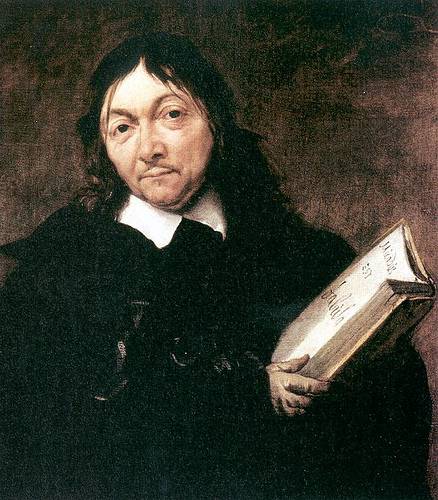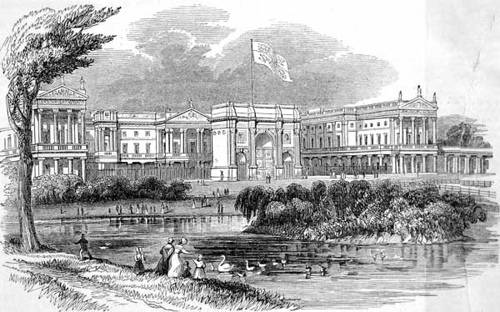
If you catch a sturgeon in the United Kingdom, it belongs to the queen.
It’s part of her royal prerogative — the sturgeon’s excellence makes it a “royal fish.”
The same goes for whales: The king gets the head and the queen the tail. Sorry.

If you catch a sturgeon in the United Kingdom, it belongs to the queen.
It’s part of her royal prerogative — the sturgeon’s excellence makes it a “royal fish.”
The same goes for whales: The king gets the head and the queen the tail. Sorry.
Full names of Portuguese monarchs, 1828-1910:
In 1910 the monarchy was abolished, perhaps because of a shortage of ink.
“Quit. That’s what reporter Milt Sosin did today.”
— Resignation notice discovered on a Miami News bulletin board after an editor insisted that beat reporters use “short and punchy paragraphs”

The disciples of Descartes made a perfect anagram upon the Latinised name of their master, ‘Renatus Cartesius,’ one which not only takes up every letter, but which also expresses their opinion of that master’s speciality–‘Tu scis res naturae’ (Thou knowest the things of nature).
— William T. Dobson, Poetical Ingenuities and Eccentricities, 1882
A guaranteed way to win at roulette, from Eugene Northrop’s Riddles in Mathematics (1945):
“Theoretically, of course, it is possible for the bank to wipe you out financially. Actually, however, runs of more than 10 or 12 successive blacks or reds are extremely rare, and your stake at the twelfth play would be only $2048. When you do win you will, as before, be $1 ahead of the bank. You can then begin all over again. Simple, isn’t it?”

When Alec Guinness was filming The Swan in North Carolina in 1955, someone gave him a tomahawk purchased at a local fairground. Guinness thought it too heavy to take with him, so as he was departing he paid a porter to slip it into Grace Kelly’s bed.
Years later, while performing in London, he found the tomahawk in his own bed.
This meant war. Guinness bided his time until the princess visited America on a poetry tour, then he contacted the English actor with whom she was traveling and persuaded him to leave the tomahawk in her bed. (“Do you know Alec Guinness?” she asked him the next day. “No, I’ve never met him,” he said.)
Guinness thought no more about it until 1980, when he visited Hollywood to accept an honorary Oscar and found the tomahawk in his hotel bed. He waited until Kelly’s next tour of England and arranged to have it left in her suitcase.
She died in 1982, so that was the last laugh. There was no one to share it with — in 25 years, neither of them had ever acknowledged that this was happening.

Australia’s Westfield ultramarathon had a surprise entrant in 1983: a 61-year-old potato farmer named Cliff Young arrived wearing overalls and gumboots and took a place among a field of 150 elite 20-somethings for the 543-mile run from Sydney to Melbourne.
Young ran with a peculiar shuffling gait that soon left him far behind the leaders, but as the race wore on he regained the ground rapidly. His strategy was simple: He didn’t sleep. He had routinely rounded up sheep on his family’s 2,000-acre ranch in Victoria, where he often ran two or three days without rest, and this preternatural endurance carried him easily into first place in the Westfield race, beating the record time by nearly two days.
At the finish Young said he’d been unaware there was a $10,000 prize; he gave it away to five other runners and returned quietly to his ranch. Asked what advice he’d give to other elderly runners, he said, “No matter what you do, you have to keep moving. If you don’t wear out, you rust out.”
In 1720, the time of the South Sea Bubble, amongst the many mad schemes put forward, was one for ‘An undertaking which shall in due time be revealed.’ Each subscriber was to pay down two guineas, and there were actually 1,000 of these subscriptions paid in one morning, the promoter of the scheme decamping with the money the same afternoon.
— The World of Wonders, 1883
What do these words have in common?

Curious doings at Buckingham Palace, 1838-1841:
This last earned him three more months’ correction, this time with hard labor, and this apparently cured him. But others would follow: In July 1982 Elizabeth II awoke to find 32-year-old Michael Fagan in her bedchamber. “He thinks so much of the Queen,” Fagan’s mother explained. “I can imagine him just wanting to simply talk and say hello and discuss his problems.”